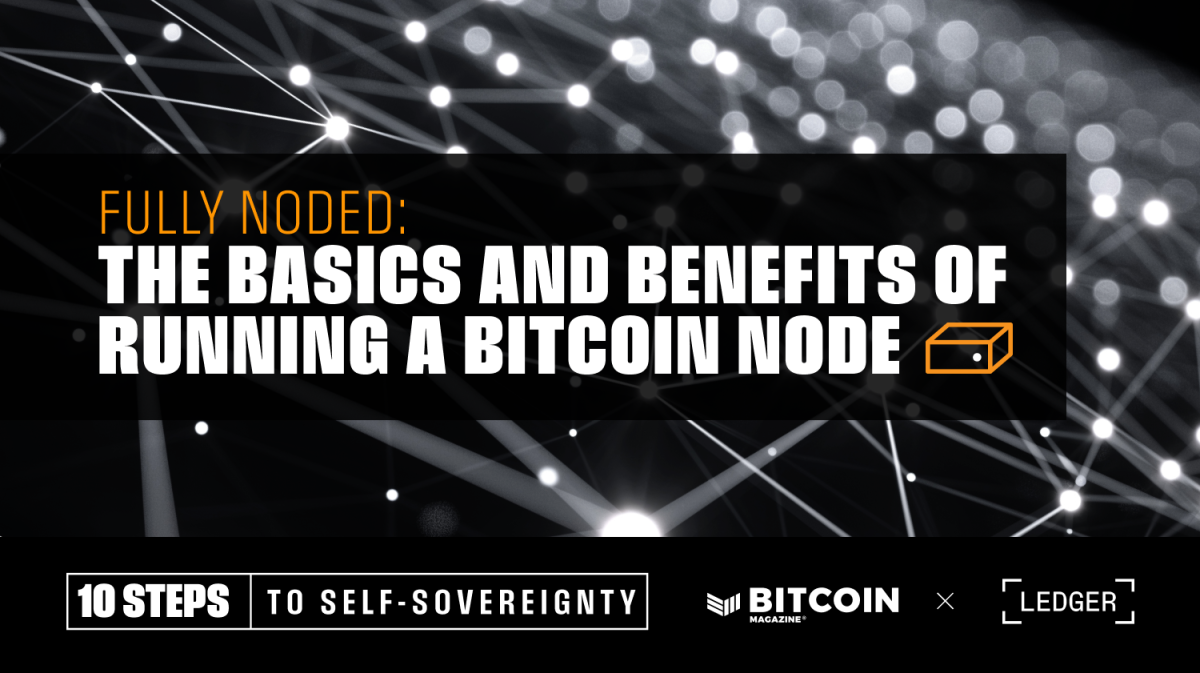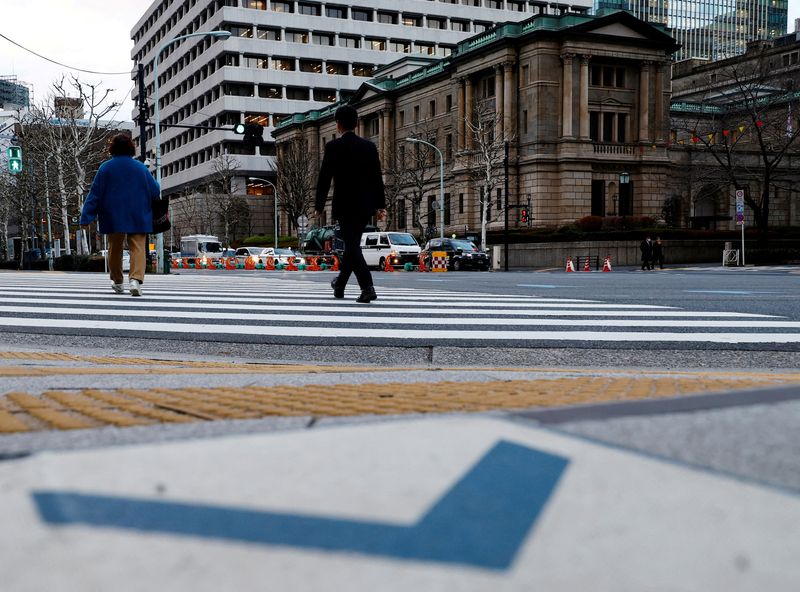Month: April 2024
All 21 Million Bitcoin Already Exist Waiting To Be Unlocked By Auction
Most people who understand bitcoin know that there are two kinds of bitcoin. One is bitcoin, the asset which has a fixed supply and is quite volatile, and the second kind of Bitcoin, the network and protocol that maintains an immutable ledger that has never been hacked and is bullet proof, bomb proof and tank proof. It is my opinion that too much focus is placed on the asset and not nearly enough on the network, protocol and immutable ledger.
While listening to a recent podcast Peter McCormack had with Dhruv Bansal they discussed the network and protocol in a new way.
I really liked Dhruv’s framing of how to view the fixed supply of bitcoin. The two versions can be simplified as follows:
Version 1: The Commonly Held View
The 21 million will be issued across a 131 year period from 2009 until 2140. Not all bitcoin have been issued or created yet. This view holds that as of March 2024 there have been roughly 19,659,000 bitcoin issued or created which is 93.62% of the entire supply. In the current epoch, the way you’d describe this is “6.25 bitcoin are created roughly every ten minutes.”
Version 2: Dhruv’s View
ALL 21 million were created via the network, consensus mechanisms, algorithms and protocol on January 3, 2009 and as of that date its monetary policy and hence the supply issuance for those 21 million was fixed on that date. ALL 21,000,000 ALREADY EXIST BUT HAVE NOT YET BEEN RELEASED OR UNLOCKED. Dhruv used the term “released” to signify how many bitcoin are issued every ten minutes. I will use the term “unlocked” for the balance of this article to further amplify the brilliance of Dhruv’s framing. Bitcoiners are already familiar with time locked bitcoin and in a sense Dhruv’s framing just extends the idea of time locked bitcoin to its logical conclusion. The time lock schedule for Epoch 1 ran for 210,000 blocks. The next time lock schedule for Epoch 2 ran for 210,000 blocks and so forth.
Why is Dhruv’s framing important?
By framing mining as buying coins rather than creating coins it helps us make sense of the constantly increasing difficulty. How do we protect this fixed supply of 21 million coins and prevent human cheating for 131 years?
If miners are creating bitcoins, then it appears that they are using ever more resources to create ever fewer coins over time. This makes bitcoin seem like it suffers an “inefficiency of scale” — as bitcoin adoption grows, more resources are used in mining, and the cost of bitcoin production *increases* instead of decreasing, as we would expect in any other industry. This is part of the reason (Dhruv suspects) why many people prima facie object to bitcoin mining — it just seems dumb and wasteful that it works this way!
Conversely, if we think of bitcoin miners as *purchasing* bitcoins from an existing supply [paid for in computations] then the increasing resources used by miners makes sense — as bitcoin adoption grows, bitcoins become more valuable, the security of the network increases and the network adjusts the price of newly released bitcoins upward. Dhruv thinks this framing could help to alleviate some people’s negative first impressions of the mining market.
Note: The reason this framing makes sense is Satoshi created an entirely new way to tell time with distributed systems. I don’t think we give him/her/them nearly enough credit for this! As Gigi points out in Bitcoin Is Time, in the absence of a central authority Satoshi had to invent a new way for a group of decentralized computers to tell time. Satoshi chose ten minutes as the target block time and enforced it via an auction. Humans are deeply tied to time as we understood it before bitcoin so some of us will have a hard time seeing it as Dhruv suggests.
The Bitcoin Base Layer Has Two Markets
Dhruv posits there are two markets operating in Bitcoin AT ALL TIMES that make up the base layer of Bitcoin. Layer zero and Layer one.
Layer zero is what I’d call the security layer and the monetary policy layer and it is enabled via math and code at an auction that occurs every block which takes on average 10 minutes. Every block since January 3, 2009 the Bitcoin network has held an auction that has a fixed asking price [measured in computations] that is selling the next tranche of bitcoin that already exist to the entire global bitcoin mining industry. An example of massive collaboration if ever there was one! Back when it was just Satoshi and Hal Finney there wasn’t a global bitcoin mining industry, but you get the gist.
Today I think the global bitcoin mining industry is better and more accurately thought of as the Bitcoin network security layer, but that is a topic for another article. Dhruv points out that this is a “two sided auction where you get this many coins for this many computations.” The entire industry of bitcoin miners [timestamp servers] paid the computational price collectively for that block. There are this many coins [depending on the epoch] for this many computations and the network waits to unlock the next batch of coins until one fortunate miner comes in that meets that minimum computational price.
There is a persistent guessing game using proof of work that goes on among all the time stamp servers who are plugged into the Bitcoin network. This is what gives the Bitcoin network such amazing security. Eventually one of these timestamp servers “wins the auction” using Dhruv’s framing and earns the block reward. Every time stamp server for that 10 minute period is serving the purpose of making the network extremely secure but only one time stamp server wins the block reward. Technically this one time stamp server is often operating in a mining pool but that does not matter for purposes of this article. If the network paid too many computations or too few then the TIME IT TOOK TO MEET THAT BID WAS DIFFERENT THAN 10 MINUTES.
The network protocol and software tracks these 2016 auctions during this 2016 block span and makes note of the times for each block. He says, “Each of those times can be thought of itself as a bid. The entire industry is offering these bids in sequence and the network pauses and says ‘what were the most recent bids in time?’ and readjusts the price it pays the miners (the security force) so that the bidding time matches the target time.”
The big idea is Bitcoin Layer zero is a market between the entire network of users and the entire network of bitcoin miners which forms the security layer for the network. This market acts as an energetic force field protecting the network every moment of every day since 2009. Why call it a market? Dhruv believes that all decentralized systems must be markets in order to work. [In this case Layer zero is a collective market that involves computations for the timed release or unlock of bitcoin. And, additionally this collective market provides security services for the timechain.]
What Is The Core Trade On Layer Zero?
What is the core trade on Layer zero? Bansal says “it’s computations for bitcoin.” Layer 0 is a “market between two aggregates.” It’s a market between the entire bitcoin network [who want security] and the entire bitcoin mining industry who want security and the block reward. There are only two “participants” in this layer. This market is closely related to another market [Layer 1] which is the market for block space. Bob Burnett has also been saying this in a different way by pointing out there are two kinds of scarcity in bitcoin. We can call Layer one the final settlement and transaction layer of Bitcoin.
Layer zero solves the problem of how to release or unlock a fixed supply of currency fairly into circulation and secure the network until the year 2140 using proof of work.
The Layer 1 market is how do I get transactions to achieve finality and change ownership on an immutable ledger? Each market has an artificial and purposeful constraint. Layer 0 is the fixed number of coins released or unlocked over 131 years. Layer 1 is the blocksize or block space. Layer 1 is a market between individuals. How much is the individual user willing to pay to include this transaction in a block?
Occasionally there are blocks mined that have zero transactions in them. For those who think “how wasteful,” think again. These blocks prove the value and existence of the security layer. Any blocks mined with zero transactions in it proves there is a Layer zero market and it ignores the Layer 1 market. [It also reinforces Dhruv’s point that there are two markets.] Over time as all bitcoin are released into circulation, the Layer zero market goes away. It is no longer needed. At that point, the only market remaining for the base layer will be Layer 1. Most bitcoiners believe the transaction fees alone will be sufficient to continue to secure the Bitcoin network long into the future. Conceptually the Layer one market will take over and secure the immutable ledger to be sure no one cheats.
There are some who believe that transaction costs won’t provide enough incentive for miners to continue to mine, but there are two markets, and the first market Layer Zero is a long way from done.
The incentives to mine are already very strong [there are something like 20 publicly traded companies] and these incentives are getting stronger every day. I know of many bitcoiners who currently run their miners for the heat it delivers and so they have a strong incentive to continue even after the Layer zero market has served its purpose. There are entrepreneurs looking to build businesses around these timestamp servers that will heat pools, heat hot water, heat rooms, heat homes and heat buildings and will provide electricity to people in the world who have none. In fact, I predict in the next few years there will be appliances built for the heat they produce.
In addition, miners are in a constant world-wide search for places where there is free energy, stranded energy, wasted energy, methane mitigation and even waste tires they can use as a fuel source. There are also nation states that are mining bitcoin. Anyone with a significant amount of bitcoin will have plenty of incentive to keep mining so long as the value of the network continues to grow AND nation states keep devaluing their currency to zero. In addition, there is a new form of energy technology called OTEC that I suspect will become a breakthrough form of energy that will be proven workable near the equator because of bitcoin mining.
Bitcoin is a layer of markets. These first two markets run separately from each other. And there is a Layer 2 that has emerged and is still being built that delivers fast settlement and payments. Layer zero is the security layer and supply unlock layer. Layer 1 is the store of value layer and final settlement layer. Layer 2 is medium of exchange and fast settlement layer.
For those who find these ideas foreign or hard to grasp feel free to ignore them or tell us where our gaps in thinking occur. Take solace in the idea that free markets and math secure your bitcoin [instead of central bankers] and will do so into the foreseeable future.
Special thanks to Dhruv Bansal for providing constructive input on this article.
This is a guest post by Mark Maraia. Opinions expressed are entirely their own and do not necessarily reflect those of BTC Inc or Bitcoin Magazine.
Skybridge’s Anthony Scaramucci Predicts $170,000 Bitcoin Price
Anthony Scaramucci, founder of major investment firm Skybridge Capital, predicted a Bitcoin price target of $170,000 in the current cycle during an appearance on CNBC’s Closing Bell.
NEW: Skybridge’s Anthony Scaramucci says #Bitcoin halving is still not priced in.
Predicts “$170000 for this cycle.” 
— Bitcoin Magazine (@BitcoinMagazine) April 8, 2024
Scaramucci has been a vocal Bitcoin proponent, with Skybridge investing heavily in Bitcoin. He cited increasing mainstream and institutional adoption as key drivers of Bitcoin’s growth.
The prominent financier and former White House Communications Director highlighted the major impact of SEC-approved Bitcoin spot ETFs in unlocking billions in new investments this year. He compared the over $10 billion in Bitcoin ETF inflows in Q1 favourably to the slower adoption of early gold ETFs.
Scaramucci also discussed the upcoming Bitcoin halving event, which will reduce daily supply and potentially dramatically impact prices. He believes the market has not priced in the halving, predicting a supply squeeze.
Although volatile, Scaramucci stressed Bitcoin’s inflation-hedging ability over a 4-year investment horizon, touting its digital gold narrative. He sees potential for Bitcoin’s market cap to reach 50% of gold’s valuation.
Scaramucci has been an avid Bitcoin proponent, with Skybridge taking an early institutional interest in Bitcoin. The firm led a high-profile push to offer Bitcoin exposure in 401(k) retirement plans, underscoring its commitment.
Despite some mainstream scepticism over the years, Scaramucci has maintained a bullish long-term outlook on Bitcoin as an emerging digital store of value. He cites generational wealth transfers and Bitcoin-friendly demographics as setting the stage for massive growth.
Scaramucci also touched on the FTX collapse, its impact, regulatory issues, and his optimism regarding the Bitcoin industry’s future maturation.
Fully Noded: The Basics and Benefits of Running a Bitcoin Node
Bitcoin is a decentralized and finite digital currency, it’s verifiable by anyone anywhere in the world. This is the chief reason people have any interest in holding it at all. No one can dilute the supply, no one can counterfeit Bitcoin, it just works as an autonomous system that cannot be interfered with. So how do you participate in this system fully to verify everything?
If you think that simply using a Bitcoin wallet is enough to do so, I’m sorry to tell you that in reality that does not make you a full participant in the Bitcoin network. A wallet simply manages your private keys and helps you craft and sign your transactions, it does not actually participate in the full validation of the Bitcoin blockchain.
To become a node and validate the transactions you need to run an additional piece of software called a client. This software is what actually handles processing and validating blocks that miners produce. The most widely used Bitcoin client is Bitcoin Core.
It is possible to interact with Bitcoin using just a wallet, and not running a full node, but there are benefits to actually using Bitcoin Core yourself.
Verifying Things Yourself
When you initiate and then sign a transaction to send an amount of Bitcoin, the signed transaction goes to the Bitcoin network’s nodes. These full nodes, some of which are miners, verify transactions and then form a race to make the next block. Miners bundle transactions together into a block, and upon completing the required proof-of-work, the block is broadcast to the network
Most people likely don’t care about other people’s bitcoin payments, if you aren’t the sender or the receiver in a transaction why would you care? If any transaction in a Bitcoin block is not a valid transaction, then the entire block is considered invalid and rejected by all full nodes running on the network. This means that in order to be absolutely sure that a payment your wallet is showing as confirmed is in fact confirmed, you need to know that every other transaction confirmed in that block is also valid.
Your full node handles all of this for you automatically. Every time a block is found, your node automatically verifies that every coin being spent has not been spent before, that all the signatures are valid, and that all other spending conditions such as timelocks meet the spending requirements.
When you are using a wallet without verifying it with your own full node, you are essentially trusting the operator of that wallet to do all of this verification for you. Running a full node yourself completely removes this aspect of trust you place in your wallet provider.
The Supply Cap
The finite supply of 21 million bitcoin is one of, if not the, core properties of Bitcoin that people think of when the subject comes up. At the core of the entire project sits the idea of removing the issuance and control over the supply of money from the hands of governments. Satoshi himself specifically discussed the factor of trust placed in government to not debase the monetary supply as a core problem of how money functioned in society.
All of the work that a full node does to verify your own transactions is also the verification necessary to ensure the integrity of the 21 million supply cap. Every bitcoin that exists in circulation on the network right now came from the same source ultimately, a special transaction in each block called the coinbase transaction. This special transaction allows the miners to bring a predefined amount of Bitcoin into circulation per block.
Your node validates each of these coinbase transactions every time a block is found. It does this to guarantee that the new coins brought into circulation do not exceed the limitations of the predefined supply cap. Any excess above that must be no more than the transaction fees paid by all of the transactions in that block. The combination of verifying that the coinbase transaction follows these special rules, as well as the fact that every other transaction is only spending valid coins that have never been spent before, your full node guarantees that the supply cap of 21 million coins is kept intact.
Keeping Your Bitcoin Private
Another important aspect of why it is important to run your own node is privacy. Now, before making this point it is very important to understand that privacy is a very nuanced issue on bitcoin. When it comes to actually maintaining privacy and preventing the people you actually transact with, i.e. send money to or receive money from, running a node is by no means a comprehensive solution. It is a very important starting point: the foundation necessary to improve your privacy.
When you are using a Bitcoin wallet that is not connected to your own full node, you must rely on someone else to process your transactions. To do so your wallet communicates all of the details about your bitcoin wallet to someone else’s node. Most of the time, this involves sending them the details of your xpub, the code that allows someone to read your transaction history and see your unspent coins. For most people, this isn’t a threat, but if you want to stay anonymous this may pose a risk. By running your own full node and connecting your wallet to that, none of this information is revealed to them.
If you value maintaining your privacy in using Bitcoin, connecting your wallet to your own full node is an absolute requirement.
Without using your own node, all of the other steps you take to maintain your privacy such as coinjoining (coinjoins are a collaborative transaction you can trustlessly make with other people to obscure whose coins go where) are a moot point, your wallet provider can see your entire balance.
Why This is All Important
While holding your own keys is an absolute necessity to interact with Bitcoin in a sovereign way, hopefully you can see now that taking the extra steps to fully validate your interactions with your own full node has additional benefits.
Without running your own full node, you are trusting a wallet provider to verify that your transactions are being confirmed. It is possible for that operator to deceive you. They can tell you that you have received coins that don’t actually exist. They could attempt to trick you by saying coins you did receive never arrived. You are trusting them to verify your balance for you, or some other third party block explorer which learns your IP address. A full node can remove that trust.
Trusting someone else to verify your transactions for you similarly outsources the verification of the total supply of bitcoin to the collective group of users who are actually verifying things themselves. By running your own node you can verify yourself with absolute certainty that the supply cap has remained intact.
Lastly, maintaining the privacy of your funds is not something that can be meaningfully achieved without running your own node. If you are using tools like coinjoins to obscure your transaction history on-chain, this activity is undermined by using someone else’s node to verify your balances. Only by running your own node can you plug this massive privacy hole in your use of Bitcoin.
Holding your own keys is a critical first step on your path down the road in Bitcoin, but by not taking this next step you are making certain compromises in your interaction with the network. Once you have your keys safely secured, it is absolutely important that you take this next step.
Here are some wallets and tools to help you in that process:
Despite Criticism, Lightning Network Continues Seeing Major Rollouts
The below is an excerpt from a recent edition of Bitcoin Magazine Pro, Bitcoin Magazine’s premium markets newsletter. To be among the first to receive these insights and other on-chain bitcoin market analysis straight to your inbox, subscribe now.
Bitcoin’s revolutionary Lightning Network has seen two major rollout initiatives begin in the last month, with new access for both the Southeast Asian region and Coinbase worldwide; nevertheless, it faces increased criticism that the entire protocol is fundamentally flawed.
The Lightning Network is a Layer-2 protocol being developed on Bitcoin’s blockchain with the ambitious aim of trying to solve Bitcoin’s scalability problem. Since the theory behind this protocol was first developed in 2016, it has seen major attention from the entire industry as a revolutionary new potential future. Essentially, Lightning seeks to further embrace the decentralized nature of Bitcoin by relying on a mesh network of locally hosted nodes to carry out its main functions. Microtransactions of BTC are made by various users, and they are processed through these nodes; smart contracts enforce a system where these tiny transactions are shuffled around and bundled. Then, these larger bundles are actually processed directly on the original blockchain, so congestion there is minimized and it’s feasible to use Bitcoin for everyday transactions. Since development began, large and influential figures have endorsed the project; most famously, El Salvador’s government uses Lightning to make Bitcoin an accessible payment option for its whole citizenry.
Despite the early hype for the program, a persistent viewpoint that the project has stagnated has been on the rise. Going back years, multiple defenses of Lightning’s long-term viability as a concept have also acknowledged its setbacks, claiming that the technology might not be sufficient as a “silver bullet” to solve the scaling problem itself. Even as the network grew to its largest heights, a series of problems remained unshakeable. For example, smaller nodes may not have the practical capacity or startup capital to actually move users’ money around; bugs hinder the user experience; merchant access is somewhat lacking; as well as other concerns.
Although these problems have been well-known, by April 2024, a few signs are leading community members to question if a breaking point has come. A series of long-term developers have publicly quit the project and denounced its flaws, and this list includes both the protocol’s original authors. As Paul Sztorc, Lightning developer and CEO at Layer Two Labs, put it, “everyone now admits that you cannot onboard 8 billion people” to Lightning, a “microscopic” amount of total Bitcoin is actually available on Lightning, and most damningly, “almost everyone who uses the real thing dislikes it” amidst a series of complaints. Indeed, a particularly concerning statistic on Lightning’s future prospects has emerged, as the network’s capacity for Bitcoin is steadily dropping even as its dollar capacity is at an all-time high.
Nevertheless, these problems have not led the community as a whole to consider the project finished. For one thing, some long-term developers have displayed continued optimism and willingness to keep building, and the determined spirit of Bitcoin has not left Lightning yet. More to the point, however, major progress is being made in the field of reliable market accessibility. In March 2024, Lightning company Neutronpay secured $1.5 million in venture capital bridge funding to deepen network infrastructure and viability in Southeast Asia. Continued projects like this are vital to ensuring that users in less-developed regions are still able to access secure nodes.
This victory pales in comparison to the events of April 3rd, however, as Coinbase finalized a secure partnership to roll out Lightning on its platform. Coinbase has voiced its general support for Lightning access for several months, but only a concrete agreement with a partner like Lightspark can turn this support into access for the exchange’s worldwide user base. Coinbase is one of the largest exchanges in the world, with more than $150 billion in transaction volume on a quarterly basis, so combining its vast resources with Lightspark’s specific technical know-how is sure to create durable node infrastructure. One of the biggest concerns for the network as a whole is the myriad problems that faulty nodes can create, so Coinbase will surely be a bulwark in that respect.
The whole situation for the Lightning Network bears remarkable similarities with Ordinals, another popular Layer-2 protocol for Bitcoin. Rather than create a platform to process Bitcoin microtransactions as regular payments, Ordinals instead seeks to transform BTC into a more durable microformat, not to be spent in regular payments. Ordinals is able to “inscribe” unique data onto individual denominations of bitcoin, which enables popular new tokenized assets to exist integrated with the leading blockchain. Of course, the project is not only used for these tokenized assets, as the inscription can be used to incorporate a huge variety of information into the indelible blockchain. In a particularly memorable episode, some developers even use Ordinals to inscribe discontinued video games.
Download the full 20-page research report prepared by Tuur Demeester (Founder, Adamant Research) for Unchained.
This entire concept has drawn a fair share of ire from certain sectors of the community. Influential developer Luke Dashjr, for example, claimed that the entire rationale behind Ordinals is a “vulnerability” in Bitcoin, one that is being “exploited… to spam the blockchain.” The popularity of the Ordinals BRC-20 token has even been linked to major congestion issues in Bitcoin, and Dashjr proposed a way to “fix” this alleged vulnerability and sabotage Ordinals’ continued functioning. Even as the network congestion has declined, the whole concept still sees pushback. Binance quoted their “ongoing efforts to streamline product offerings” as a rationale for completely removing Ordinals from their platform in April.
The criticism of Lightning does substantially differ from that of Ordinals, to be sure. Lightning’s detractors call it a failed attempt to help Bitcoin’s usability, while Ordinals’ critics see its success as a threat to the same goal. Nevertheless, there are a number of similarities between the two positions: both have developed a cadre of vocal opponents, and both have seen recent practical setbacks to their overall capacity. Developers on Bitcoin’s blockchain have always been an eclectic bunch, holding a wide variety of entirely different viewpoints on how to make Bitcoin better. Especially considering that the world of Bitcoin is both global and leaderless, it’s no wonder that these complex Layer-2 protocols step on a few toes.
And yet, neither one of them is completely defeated. Dashjr’s proposal to disable Ordinals was firmly rejected by the community, and development continues. In an impressive turn, the trillion-dollar finance giant Franklin Templeton even endorsed Ordinals with a report from their Digital Assets Division. This report claimed that Ordinals was driving a “renaissance” in Bitcoin adoption and that the new Ordinals products have both energized Bitcoin’s user base and clearly demonstrated the blockchain’s flexibility and superiority over its competitors. Praise like this from such an important source could truly be groundbreaking.
Events like this serve, more than anything, to prove once again that Bitcoin’s spirit is not merely posed to disrupt established industries and build a more rational order on the wreckage. Developers from around the world also have a determined ability to keep working on a project in the hard times, and this spirit has served us well on Bitcoin’s rocky road to the top. Lightning and Ordinals developers have both shown a continued ability to refine their projects despite great adversity, and that spirit has been rewarded with newfound institutional acceptance. It’s unclear at present where exactly either of these projects will go from here or if a newer Layer-2 solution will eclipse them both as the next revolution in Bitcoin. No matter what happens, however, it’s clear that Bitcoin as a whole will be stronger for it.
China’s Largest Funds Apply for Spot Bitcoin ETF in Hong Kong
Some of China’s biggest asset managers are using Hong Kong subsidiaries to enter the Bitcoin ETF market, according to recent reports.
JUST IN: 
You can’t stop an idea whose time has come 
— Bitcoin Magazine (@BitcoinMagazine) April 8, 2024
Securities Times reported on Monday that financial giants like Harvest Fund and Southern Fund have submitted applications via their Hong Kong arms and are awaiting regulatory approval. The move reflects growing institutional interest despite China’s previous hostility towards Bitcoin.
Harvest Fund manages over $230 billion in total assets, while Southern Fund oversees over $280 billion. Approval of Bitcoin ETF products from such influential institutions could significantly validate Bitcoin in the eyes of both Chinese regulators and investors.
The news is also a testament to the evolving landscape of Bitcoin in China. Despite its previous crackdown on Bitcoin trading and mining, the country is now witnessing a shift. While the mainland remains cautious, Hong Kong has adopted a more open approach, attracting the attention of Chinese funds.
By leveraging Hong Kong subsidiaries, major funds can gain exposure to Bitcoin in a compliant manner. The location provides a legal loophole for Chinese companies to participate in the burgeoning Bitcoin asset class.
Industry insiders are buzzing with anticipation as they predict a significant milestone in Bitcoin. Hong Kong’s first Bitcoin ETFs could potentially launch as early as Q2 this year.
Financial leaders are clearly eager to meet surging investor demand for Bitcoin access. Bitcoin ETFs offer a regulated on-ramp for both institutional and retail players.
Former Japan FX tsar says yen weakening could trigger intervention at ‘any time’
Post Content
Asia FX muted, dollar steady as June rate cut bets recede
Post Content
Japan likely to intervene if yen falls well below 152 vs $, says ex-FX diplomat Yamazaki
Post Content
Japan warns against excessive yen moves, repeats verbal intervention
Post Content
Dollar steadies, on track for weekly loss after job growth blowout
Post Content








